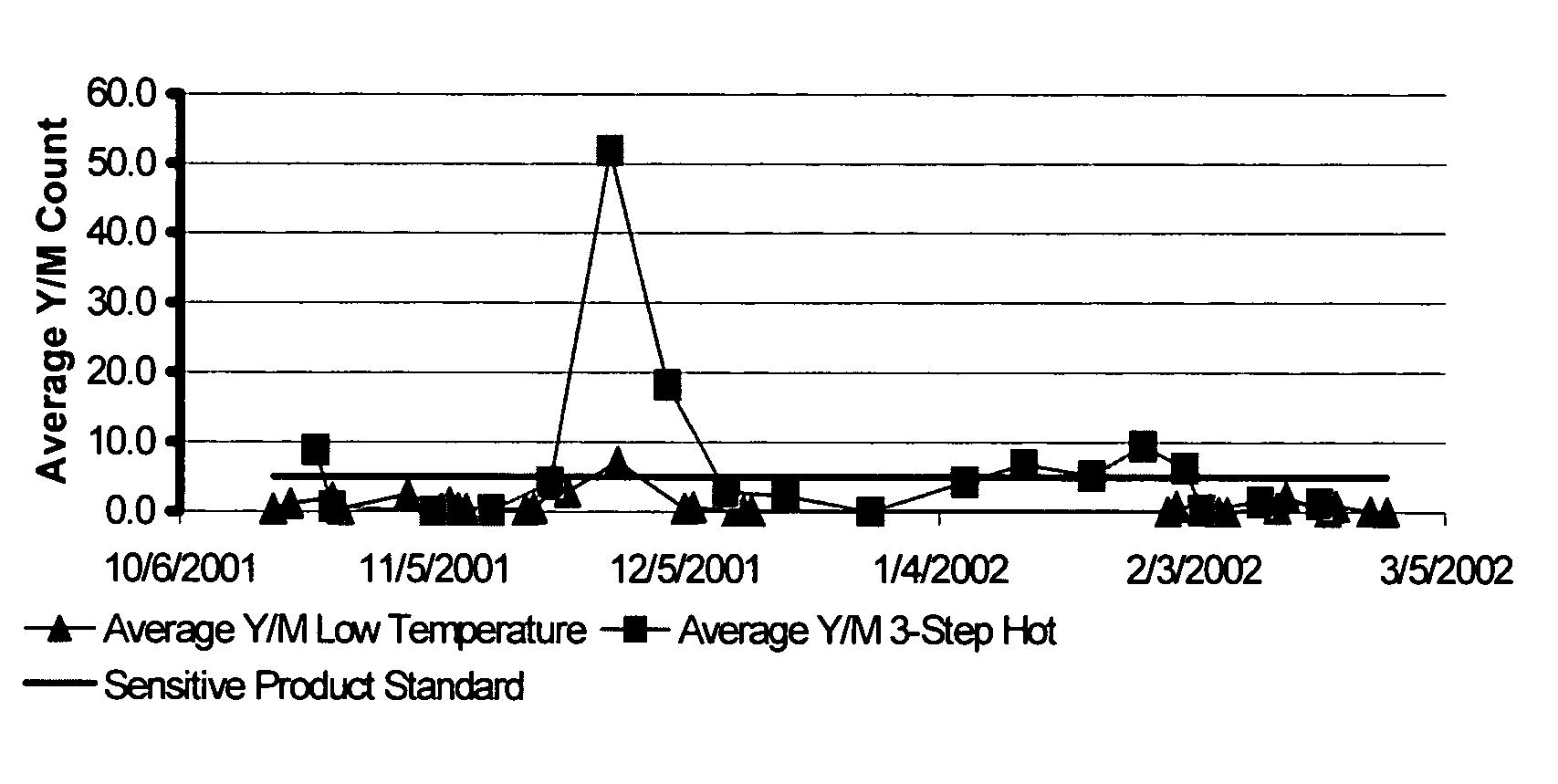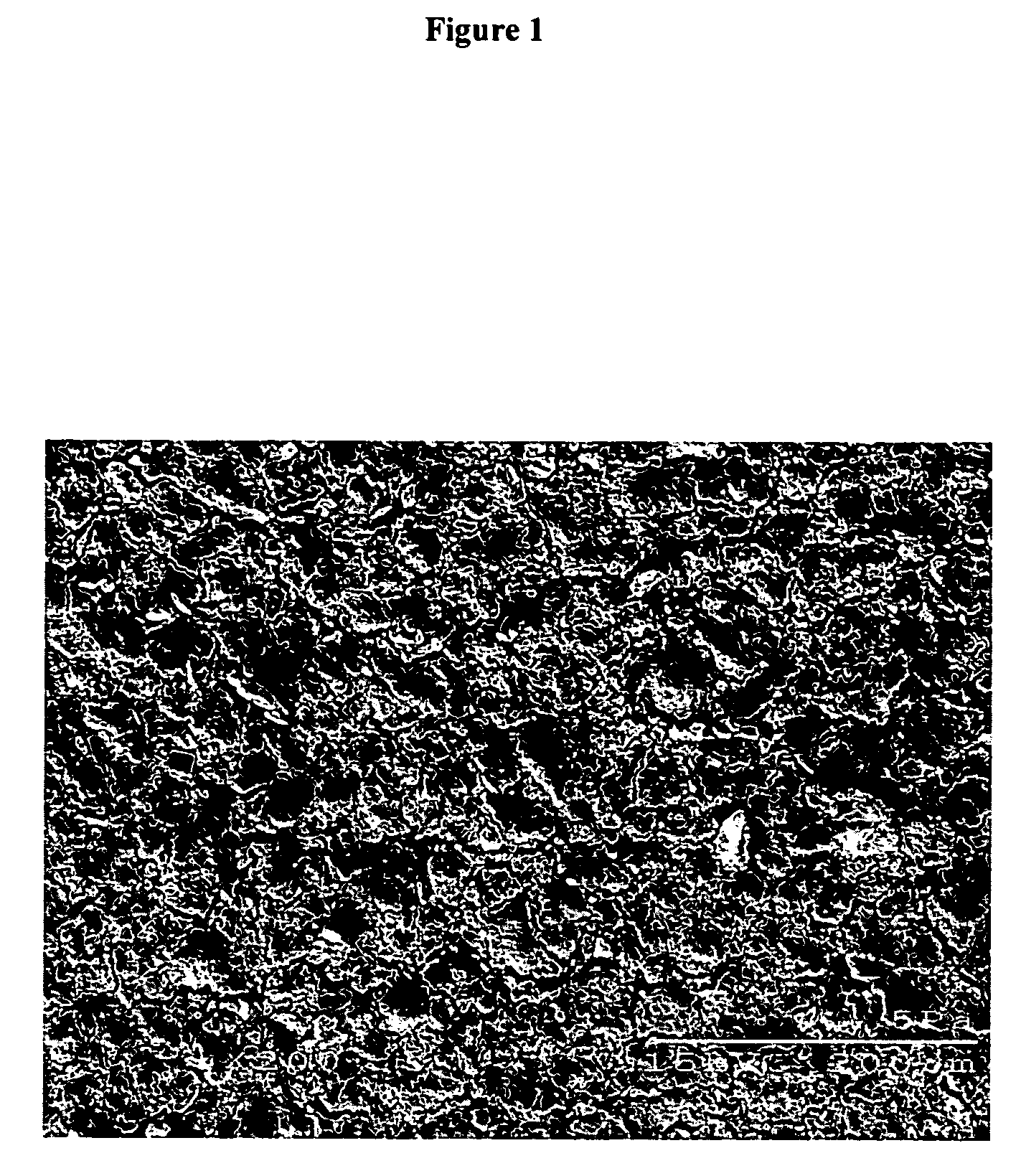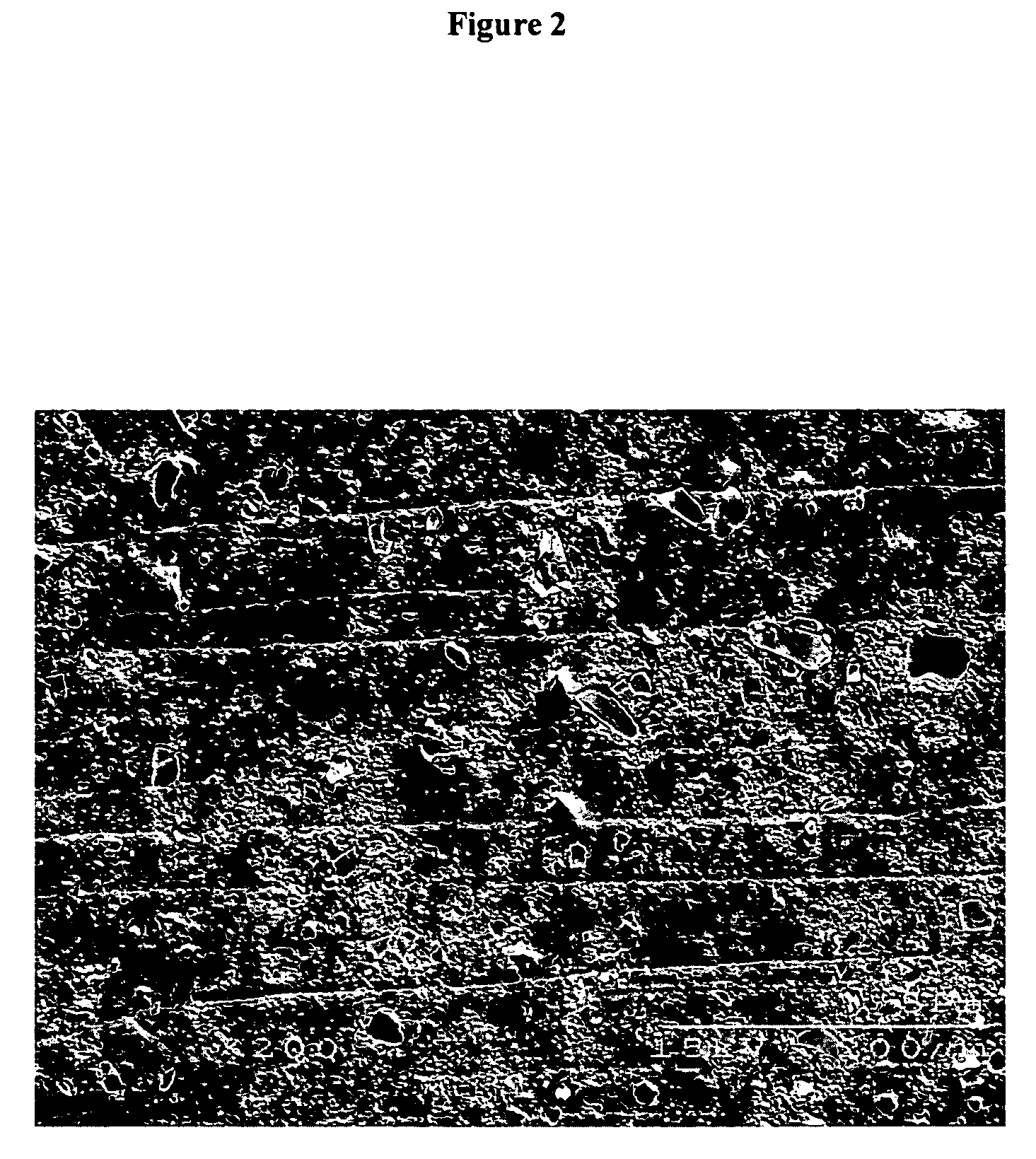Low temperature cleaning
a low-temperature cleaning and low-temperature technology, applied in the direction of cleaning using liquids, detergent compounding agents, instruments, etc., can solve the problems of ineffective equipment sanitation, difficult to maintain high temperatures for an entire cleaning and sanitizing program, and high time consumption and cost of cleaning and sanitizing plant equipmen
- Summary
- Abstract
- Description
- Claims
- Application Information
AI Technical Summary
Problems solved by technology
Method used
Image
Examples
examples
Coupon Preparation
[0119]The elastomeric coupons used for micrographs, sanitizing and sanitation studies were prepared by cutting 1″×1″ squares from test sheets purchased from C&C Packagers, White Bear Lake, Minn. The stainless steel coupons were prepared by cutting squares from test sheets purchased from Metal Samples, Munford, Ala. Both coupons were treated as follows:
185° F. water —12 squares were placed in ajar containing 1 liter of water, the jar was covered and placed in a 185° F. oven for 14 days.
[0120]185° F. Bevrosheen (a caustic detergent, pH 13, available from Ecolab Inc.)—12 squares were placed in a jar containing 3.5 ml of Bevrosheen and 1 liter of water, the jar was covered and placed in a 185° F. oven for 14 days. The pH was adjusted to 13 every 2–3 days with NaOH.
104° F. phosphoric acid and citric acid (pH 2.3)—12 squares were placed in a jar containing 2.3 ml of a mixture of phosphoric acid, citric acid and surfactants and couplers and 1 liter of water, the jar was c...
examples 1 – 3
Examples 1–3
[0124]
TABLE 1Efficacy Against Lactobacillus malefermentans 5-min Contact-Time at Room TemperatureInoculum ControlSanitizer TreatmentSubstrate / CarrierTotal Average0.26% Vortexx50 ppm Chlorine185 F. WaterChemical TreatmentInitialFilter SurvivorsFilter SurvivorsFilter SurvivorsMaterial(Corrosion)TrialPopulation*(CFU / ml)(CFU / ml)(CFU)BUNA NpH 2.311.0E+03Phosphoric Acid2104 F., 2 weeks3BUNA NpH 1319.7E+01Caustic2185 F., 2 weeks3Silicon RubberpH 2.311.6E+02Phosphoric Acid2104 F., 2 weeks3Silicon RubberpH 1311.1E+02Caustic2185 F., 2 weeks3Stainless SteelNone11.1E+0223*Average of 2 plates
[0125]Table 1 compares the efficacy of three sanitizer treatments against Lactobacillus malefermentans: 185° F. water, chlorine, and 0.26% Vortexx™ at 104° F. (inventive method). These three sanitizer treatments were tested on five preconditioned coupons: (1) a BUNA N coupon preconditioned for two weeks with phosphoric acid (pH 2.3) at 104° F.; (2) a BUNA N coupon preconditioned for two weeks usi...
example 4
[0131]This example illustrates the utility of the invention. Table 4 shows survivors after being treated with the 5-step method described under Coupon Testing for Bio-Load Removal Study. The yeast-mold isolates described under the Antimicrobial Treatment Test Method were grown up on silicon rubber coupons that had been pre-treated as follows: (1) virgin, untreated surface; (2) 185° F. water; (3) 185° F. Bevrosheen; and (4) 104° F. acidic detergent (a mixture of phosphoric acid, citric acid and surfactant and coupler). The yeast / mold isolates that were grown up on 185° F. water treated (two weeks) silicon rubber substrates were more difficult to remove and kill than those that were grown up on the silicon rubber substrates that were subjected to the methods that are described in this disclosure. Specifically, the coupon that was pretreated with 185° F. water only showed a 1 log reduction in the yeast-mold isolates after being subjected to the 5-step method of the invention. Again, wh...
PUM
| Property | Measurement | Unit |
|---|---|---|
| Temperature | aaaaa | aaaaa |
| Temperature | aaaaa | aaaaa |
| Temperature | aaaaa | aaaaa |
Abstract
Description
Claims
Application Information
 Login to View More
Login to View More - R&D
- Intellectual Property
- Life Sciences
- Materials
- Tech Scout
- Unparalleled Data Quality
- Higher Quality Content
- 60% Fewer Hallucinations
Browse by: Latest US Patents, China's latest patents, Technical Efficacy Thesaurus, Application Domain, Technology Topic, Popular Technical Reports.
© 2025 PatSnap. All rights reserved.Legal|Privacy policy|Modern Slavery Act Transparency Statement|Sitemap|About US| Contact US: help@patsnap.com



